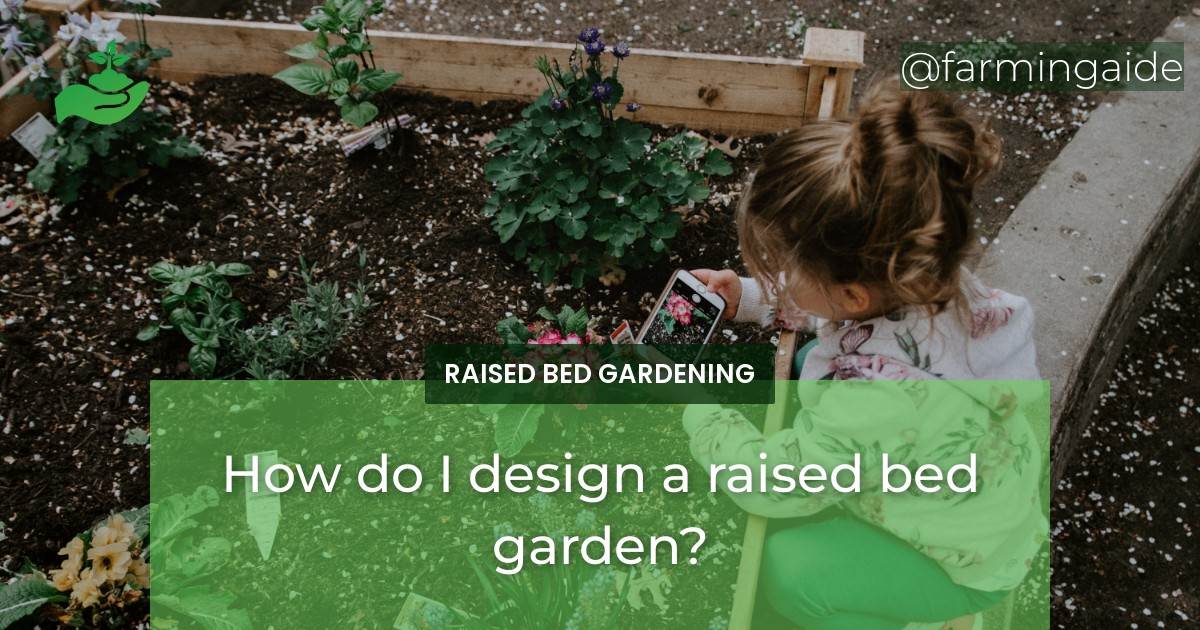Designing a raised bed garden can be an exciting and rewarding experience for both novice and experienced gardeners. Raised bed gardens provide many benefits such as improved soil conditions, better drainage, and easier access for planting and harvesting. However, before getting started, it is essential to understand what components are necessary for designing a raised bed garden. This article will cover everything you need to know about designing and constructing a raised bed garden, including the location, size and shape, materials, preparation, and maintenance.
Choose the Location for the Bed
Sun Exposure
The first step in designing a raised bed garden is to choose the location. It is essential to choose a site that receives ample sunlight (at least six hours per day). Ensure the bed is not shaded by nearby trees or buildings. Additionally, consider the orientation of the bed. North to south orientation is the ideal position to ensure proper sun exposure.
Drainage
Another factor to consider is drainage. Choose a location that has proper drainage to prevent waterlogging and root rot. Avoid low-lying areas or areas with poor drainage.
Determine the Size and Shape of the Bed
ALSO READ
Materials
When determining the size and shape of your raised bed garden, several factors must be considered. The type of materials used will determine the size and shape of the bed. Some materials commonly used for raised bed construction include wood, concrete blocks, and galvanized steel.
Dimensions
Additionally, the dimensions of the bed should be considered. A standard raised bed garden is usually four feet wide by eight feet long. This size allows for easy access to the plants without walking on the soil. The height of the bed should be between 11 to 12 inches to provide ample space for root growth.
Prepare the Site
ALSO READ
Clear the Area
Once you have determined the location, size, and shape of your raised bed garden, the next step is to prepare the site. Clear the area of any grass, weeds, or debris.
Build the Frame
After clearing the area, the next step is to build the frame of the raised bed garden. When building the frame, ensure the corners are square, and the sides are level. This will ensure the bed is sturdy and level.
Fill the Bed
Soil
After building the frame, it is time to fill the bed with soil. Use high-quality soil that is rich in organic matter and has good drainage.
Compost
Additionally, mixing compost into the soil will provide additional nutrients for the plants and improve soil quality.
Mulch
Finally, add a layer of mulch to the top of the soil. Mulch helps retain moisture in the soil, prevent weed growth, and regulate soil temperature.
Maintain the Bed
Watering
Maintaining a raised bed garden requires regular watering. Water the plants deeply and regularly to ensure they receive enough moisture. Additionally, ensure that the soil does not dry out completely between watering.
Fertilizing
Another essential aspect of maintaining a raised bed garden is fertilizing. Use organic fertilizers that are high in nitrogen, potassium, and phosphorus.
Pest Control
Finally, pest control is necessary to prevent damage to your plants. Use natural pest control methods such as companion planting and crop rotation.
Plan Your Plants
Companion Planting
When planning your raised bed garden, consider companion planting. Companion planting involves planting different crops together that have a symbiotic relationship.
Crop Rotation
Additionally, crop rotation is an essential aspect of planning your raised bed garden. Rotate your crops to prevent soil depletion and to prevent soil-borne diseases.
– How can I incorporate legs into my raised bed garden design?
When building raised garden bed legs, consider the height for easy access. Incorporate sturdy materials like wood or metal for stability. Place the legs evenly to support the weight of the soil. Ensure proper drainage and ample space for plant roots. Choose a design that complements your garden aesthetic.
Conclusion
Designing a raised bed garden involves several steps, including choosing the location, determining the size and shape, preparing the site, filling the bed, maintaining the bed, and planning your plants. By following these steps, you can create a beautiful and thriving raised bed garden that will provide fresh produce for years to come.


